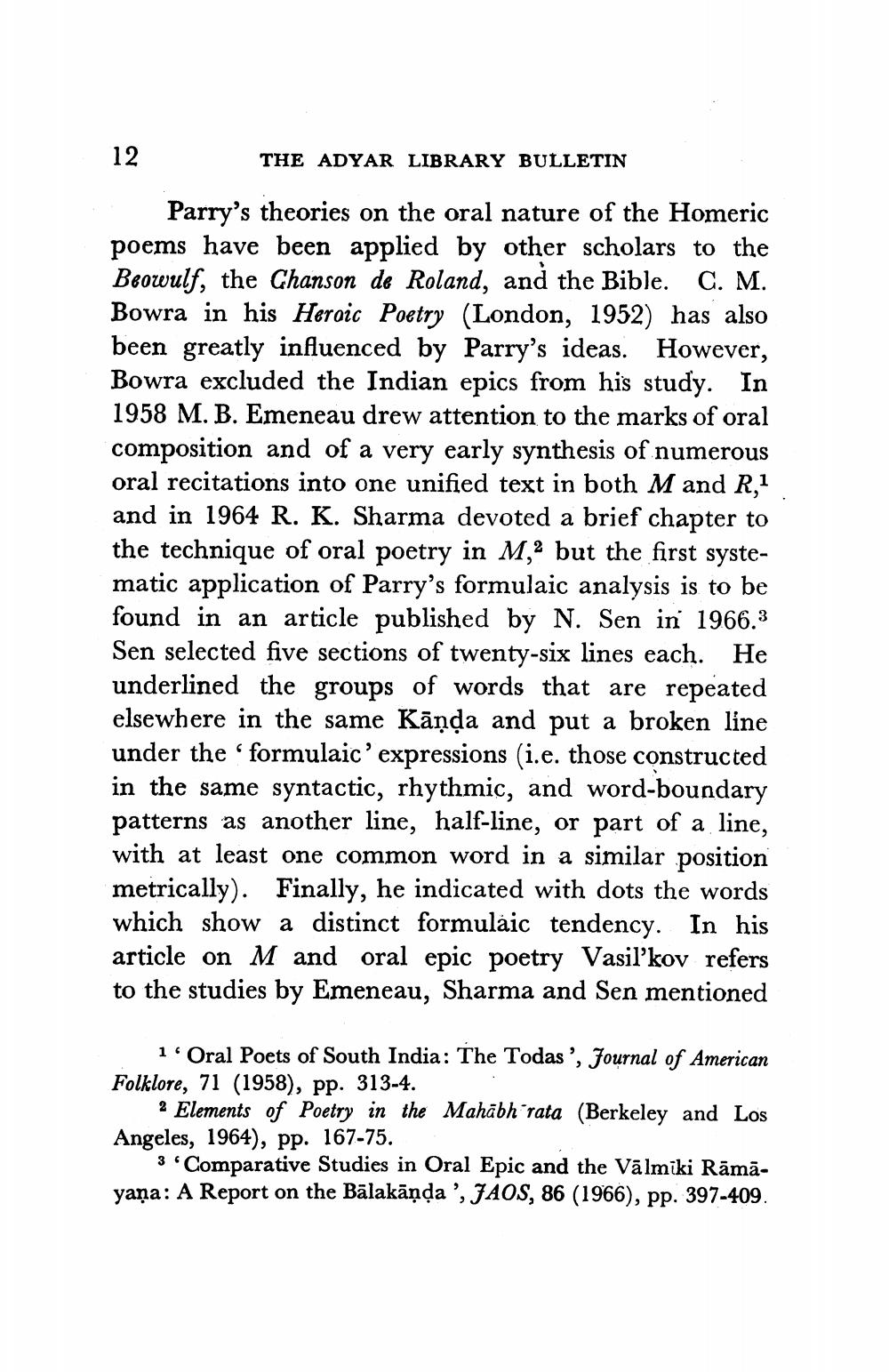________________
12
THE ADYAR LIBRARY BULLETIN
Parry's theories on the oral nature of the Homeric poems have been applied by other scholars to the Beowulf, the Chanson de Roland, and the Bible. C. M. Bowra in his Heroic Poetry (London, 1952) has also been greatly influenced by Parry's ideas. However, Bowra excluded the Indian epics from his study. In 1958 M. B. Emeneau drew attention to the marks of oral composition and of a very early synthesis of numerous oral recitations into one unified text in both M and R,1 and in 1964 R. K. Sharma devoted a brief chapter to the technique of oral poetry in M, but the first systematic application of Parry's formulaic analysis is to be found in an article published by N. Sen in 1966.3 Sen selected five sections of twenty-six lines each. He underlined the groups of words that are repeated elsewhere in the same Kāņda and put a broken line under the ‘formulaic'expressions (i.e. those constructed in the same syntactic, rhythmic, and word-boundary patterns as another line, half-line, or part of a line, with at least one common word in a similar position metrically). Finally, he indicated with dots the words which show a distinct formuláic tendency. In his article on M and oral epic poetry Vasil'kov refers to the studies by Emeneau, Sharma and Sen mentioned
1. Oral Poets of South India: The Todas', Journal of American Folklore, 71 (1958), pp. 313-4.
2 Elements of Poetry in the Mahābh rata (Berkeley and Los Angeles, 1964), pp. 167-75.
3 Comparative Studies in Oral Epic and the Vālmiki Rāmā. yaņa: A Report on the Bālakāņda', JAOS, 86 (1966), pp. 397-409.




